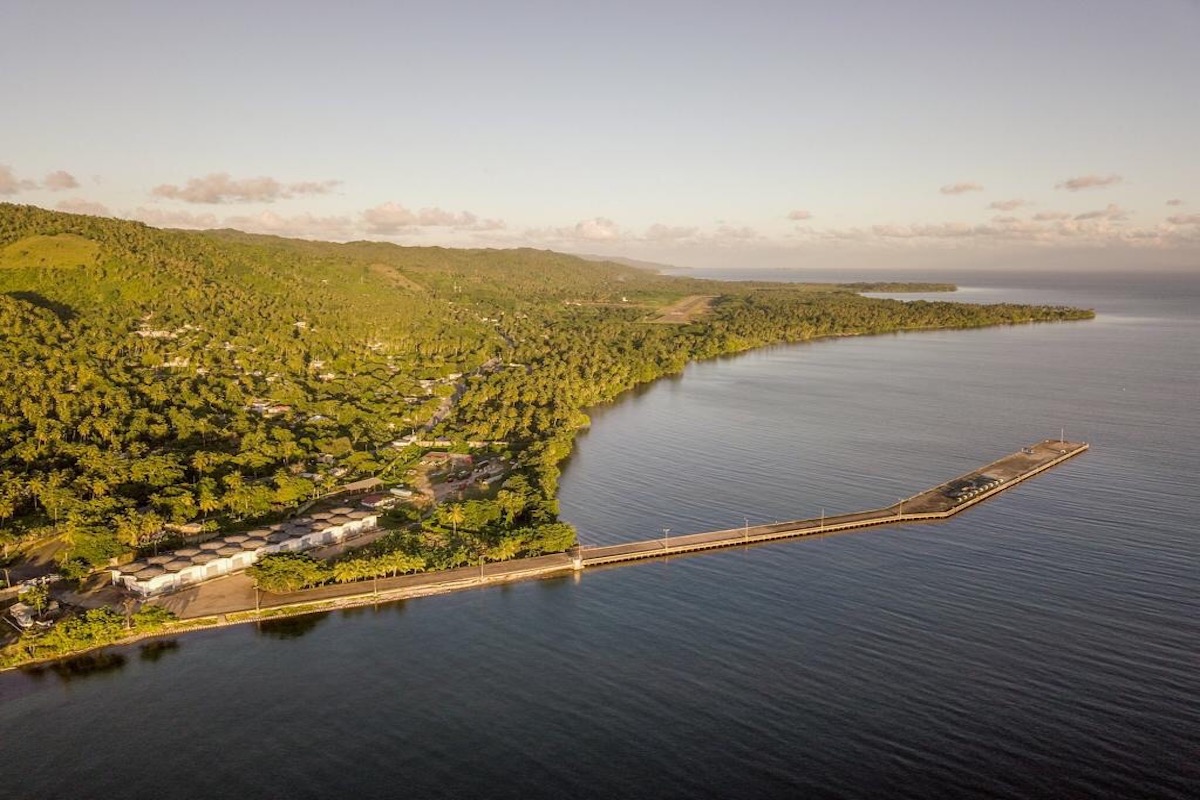

A view of Arroyo Barril
By Omar Alfonso
Spanish version here.
ARROYO BARRIL, DOMINICAN REPUBLIC — Ricardo Payano’s death took everyone by surprise.
The day before, as usual, he spent time with his friends at the Juan Pablo Duarte dock in Arroyo Barril, the Dominican port that in October 2003 began to receive shipments that would reach the 27,000 tons of coal ash from AES in Guayama, Puerto Rico.
When it disembarked, Ricardo was one of the workers assigned to scoop up the residue that fell from the trucks that carried the toxic waste from the barges moored to the dock to an adjacent lot, at the time, full of coconut palm trees.
He also had to climb on each truck to level and flatten the load with the shovel until it could be covered with a tarp and, on occasion, he picked up by hand the dusty material that escaped the dock’s mechanical shovel.
“We all had scratchy throats and our eyes were watering, but Ricardo [Payano] did not complain,” said Eusebio Marte-Mercedes, one of the few workmates who survived him. “And when it rained, it gave us an itch that I could not stand, but he still [Payano] went on nonstop.”
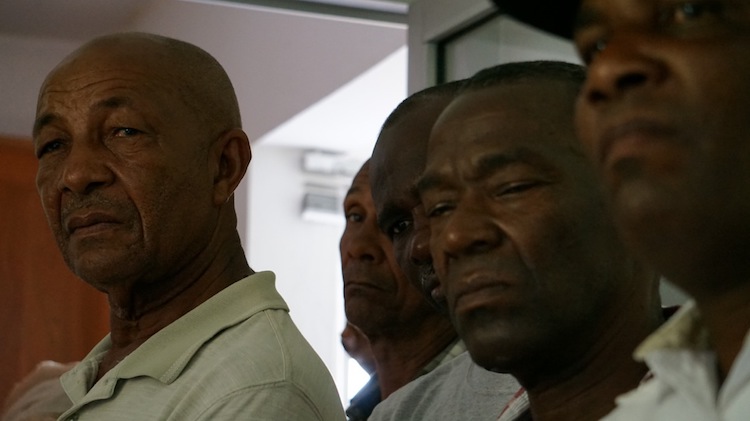

Far right: Eusebio Marte-Mercedes (Photo by Carlos Alfonso Matos)
“He was a strong guy, who worked from sunset to dawn,” said his brother-in-law, the former mayor of Arroyo Barril, Ángel Javier Espino. But everything changed on February 16, 2017, when Payano fell at his home from an intense abdominal pain.
“Hours after being taken to the doctor, the man died. And when the doctors examined him, he was rotten inside,” said Javier Espino. “It was a painful death. When we were on the road we even had to stop because he vomited excrement.”
The death certificate confirms that Ricardo Payano died on February 17 due to intestinal obstruction and mesenteric infarction. His abrupt death, however, is not exceptional. Since 2007 —the year in which dozens of workers were rehired to extract from Arroyo Barril the same mountain of rockash that they had piled by the ocean— at least 21 shovel workers, truck drivers and even Customs and Port Authority officials have died without health authorities having an explanation. All were in direct contact with the gray waste.
Javier Espino, who is also the General Secretary of the local Port Union, said among them are Alejandro Fermín, Rubén Johnson, Mario de los Santos, Olivorio Andújar, Confesor Hernández, Víctor Sosa and Julio Alcalá, workers and public employees who were between 40 and 70 years old at the time of death. “And we think it was because of rockash,” he said.
They Had No Protection
As truck driver Luis Andrés Kery Medina explained, the unloading of rockash would start at 1pm and it was necessary to turn on the lights of the trucks “because there was no visibility. Everything here was full of that stuff. “
“When that breeze [hit], all of this would be covered,” he recalled in front of the entrance gate to Puerto Duarte. He also assured that none of the drivers and occupants of the cargo trucks had any way to escape. They had to inhale the persistent ash cloud, because they did not have air conditioners and the dust cloud entered freely into their cabins.
However, for Javier Espino “the worst” occurred as of February 23, 2007, when AES settled in a U.S. court to pay $6 million for the Dominican government to dispose of the material elsewhere.
“That’s where the worst happened,” he said. “That was the one that did the most damage, because when they took it out, a cloud formed that nobody could see. And those people were there, without protection. Not a mask, not a glove, because they told us it was a construction material, like a cement.”
“They deceived us all, including me,” he added.
Severino Marte Acosta coincided with Javier Espino. In 2007, he worked for the Dominican Port Authority as the person in charge of the Depository Section of the Arroyo Barril dock and “when the trucks were too full, the rockash fell and became dust.”
“Workers were then sent to pick up the ash with shovels, but as the breeze came it created a cloud and the only protection we had were our hands,” he continued, after covering his face with his.
“That was the protection we had, our hands,” he noted.
For the ash removal operation, “foreign supervisors” wore clothes, masks, gloves and safety boots, according to Justo Alcalá Gerónimo, who in 2003 was recruited as a driver and assistant inspector of the landing.
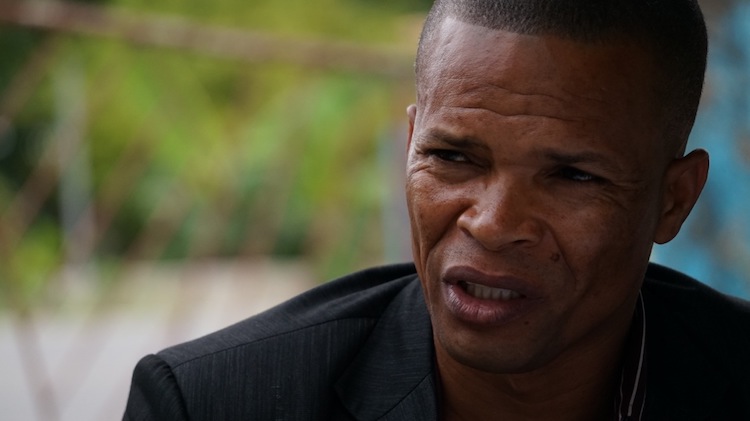

“When they came to remove the material, they came with safety clothing, protection, as if they were going to the Moon”, Justo Alcalá Gerónimo said. (Photo by Carlos Alfonso Matos)
“When that happened, they did it in a very, you could say, discreet way, since they did not want the population to realize that the material is totally toxic,” said Alcalá Gerónimo.
“When they came to remove the material, they came with safety clothing, protection, as if they were going to the Moon, dressed well in waterproof clothing. And we would say, ‘but if that isn’t harmful, then why are they protected and our men, our people, work without any protection?’ It was then [when] we realized that we are exposed to a totally toxic material, harmful to our health.”
However, this waste was not completely removed from the site. As La Perla del Sur and the Center for Investigative Journalism(CPI, for its initials in Spanish) found last year, gray residue layers still remain, both buried and exposed, in an agricultural plot adjacent to the location where the load was originally dumped.
‘They Ended a Generation’
“From then on [2007] our population began to have many, many health problems and people died very, very quickly… and doctors did not know what was causing their death,” added Alcalá Gerónimo, a concern that was confirmed by doctors Emiliano Calcaño-García and Eduardo Ortiz-Mejías, physicians who worked with the Leopoldo Pou Hospital, the Province of Samaná’s regional clinic.
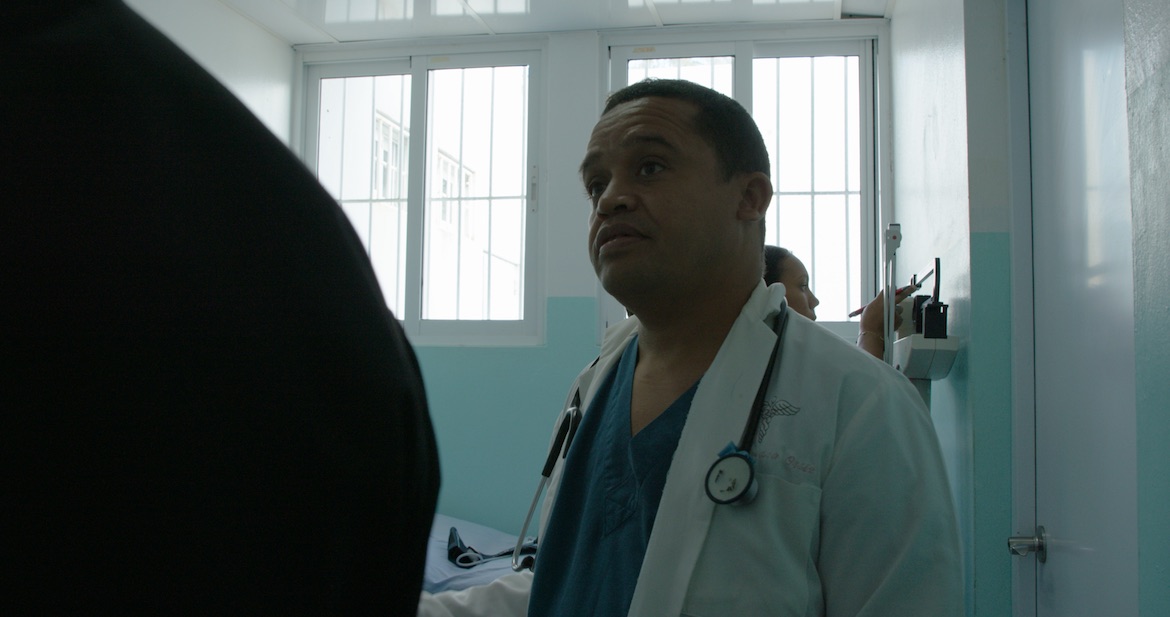

Dr. Mejías has witnessed how health problems affected the people of Samaná after the appearance of rockash.(Photo by Leandro Fabrizi Ríos | Center for Investigative Journalism)
Dr. Calcaño-García was even surprised by the number of abortions and pregnancies that ended abruptly due to fetal malformations. “What was happening did not happen before,” he said.
“I was surprised because I did not know about those children who were born with exposed intestines. Even [the municipality] Sánchez have appeared in those cases, and Sánchez is 34 kilometers away from here,” said the most veteran of Leopoldo Pou’s gynecologists.
“And what explanations did the mothers give? What did they say?” he was asked.
“That there was a very strange phenomenon, but it had to be investigated. It still has to be investigated, because no studies have been done about it,” he replied.
His remark was validated by Dr. Rosa Domingo-Maleno, director of the Ministry of Health in the Province of Samaná, who acknowledged that more than a decade after the atypical surge of abortions in Arroyo Barril, no competent authority has conducted an epidemiological or soil contamination study to determine if the recurrence of spontaneous abortions and malformations in this municipality is or isn’t linked to the almost 30,000 tons of rockash that were abandoned there for four years, in the open, by the ocean, very close to streams, home gardens and hundreds of homes.
“We haven’t done a direct study in itself, but there is a suspicion that it was because of that material,” said the official.
Even so, vital statistics collected by her office and obtained by La Perla del Sur and the CPI reveal that of the 1,290 pregnancies registered during the year 2005 in the Province of Samaná, 415 ended in spontaneous abortions (32.1%).
“The rates tend to fluctuate between 15 to 20 percent, so if that year in that region it was 32.1%, it was very high,” said demographer Raúl Figueroa-Rodríguez.
These figures, coupled with reports from 2006 and 2007, prove that in only three years, the Ministry of Health registered 996 abortions in that region.
“And those that always presented the malformations were practically from Arroyo Barril and La Pascuala,” an adjoining community of Samaná, explained Domingo Maleno. In both locations, a little more than 10,000 people lived.
“With these numbers, what is demonstrated is that they ended a generation there,” Eugenio Andújar Madonado, environmental activist and preside of Arroyo Barril’s neighborhood board, said. “If we had known before, not for all the millions of the world would we have allowed that barge to anchor in that port. Why? Because that was playing with health, with the life of the entire municipal district of Arroyo Barril.”
Despite repeated requests, the Domingo Maleno did not provide statistics prior to 2005, or after 2011, for comparison of data. An application made to the Ministry of Health of the Dominican Republic was also not answered.
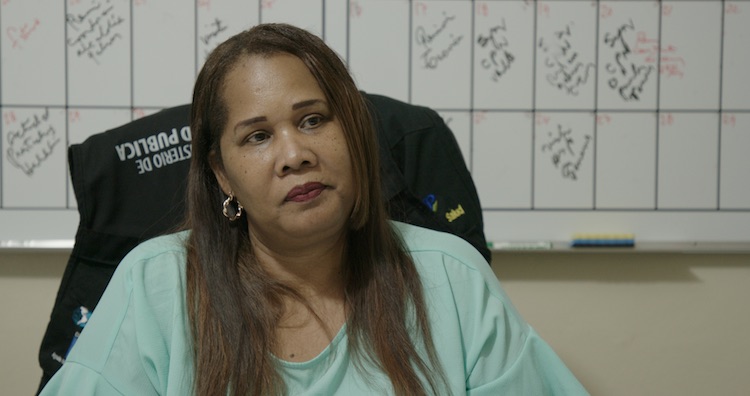

Dr. Rosa Domingo Maleno confirmed the anomaly in the number of abortions in the region. (Photo by Leandro Fabrizi Ríos | Center for Investigative Journalism)
More Deformed Children
Fifteen years after the first avalanche of ashes from AES Puerto Rico was dumped in the heart of this coastal community, few things have changed. Among them, what most troubles Dr. Ortiz-Mejías: the health consequences.
“Babies with malformations are still being born,” he summarized.
According to the doctor, the incidence of spontaneous abortions and birth defects in newborns of Arroyo Barril is lower than the rate that prevailed a decade ago, “but I am still there, in the provincial hospital, and I continue to see the same cases. Things that I thought were only seen in textbooks, but in Arroyo Barril they have happened.”
Among other examples, he mentioned the recurrence of fetuses without part of the brain and skull, with reproductive organs of both sexes, without limbs, with exposed intestines or even a double cranium.
“Since that material was dumped, we’ve seen a transformation, an alteration of nature and we don’t know what is happening,” said Ortiz-Mejías, trying to find a reasonable explanation for the anomalies. After an extensive chat at the entrance of his home in Arroyo Barril, he pointed to what he called “a silent enemy.”
“The environmental factor is the one that is impacting day-by-day and will continue to impact us,” he said. Puerto Rican professor Arturo Massol-Deyá, a doctor in biology with specialty in microbial ecology, says the opinion is valid.
“Removing the ashes that are exposed in Arroyo Barril or in Puerto Rico doesn’t solve the problem in its entirety, because all its chemical elements, all those heavy metals, remain in place. They will never disappear,” he said.
“For example, the metals present in the ashes could very well have moved from the soil to the vegetation. And if there are palm trees there, and their coconuts are used, that vegetation tends to biomagnify, a biological process that amplifies the concentration of these metals that are found in the soil…”
“And that’s where the risk lies,” he continued. “We’ve seen it on Vieques and other areas like the Bikini Islands in the Pacific Ocean, where they practiced with atomic bombs. Neither water nor radiation is detected in the water, but in palm trees there are still radiation levels above what is considered safe, due to this biomagnification effect and, therefore, they represent a risk that doesn’t allow some of those islands to be inhabited, more than 50 years after those military exercises.”
Due to such precedents, Massol-Deyá did not rule out that the residents of Samaná still live in a potentially contaminated environment, “with elements that are unseen, do not generate odors and do not change the color of meals, but whose exposure to them can severely compromise health.”
“With the profile of abortions and the health conditions they suffer [in Arroyo Barril] there is already probable cause. There are enough precedents for this environmental assessment and those issues to be addressed,” the university professor added. He also said the environmental study can identify with scientific certainty if sources of exposure to rockash pollutants remain in the area, to warn the community.
AES Corporation already knows about these effects. In one of the lawsuits filed against the company for the effects of rockash on pregnant women in Arroyo Barril, federal judge Jan Jurden accepted the testimony of Dr. Cynthia Bearer as evidence, who stated that with “reasonable degree of medical probability” coal ash causes structural birth defects and neurotoxic damage in fetal development.
Bearer is the Division Head of Pediatric Neonatology at the University of Baltimore School of Medicine and for more than 25 years has studied the effects of heavy metal neurotoxicity on pregnancy.
One Misfortune Over Another
AES Puerto Rico and its parent company, AES Corporation, are not obligated to pay an extra cent over the $6 million disbursed to the government of the Dominican Republic for the damages that their toxic waste caused to the Samaná ecosystem and its population.
After that country’s government claimed $80 million at the U.S. District Court of Virginia for the environmental crimes the U.S. company caused in the municipalities of Arroyo Barril and Manzanillo, AES agreed to pay $6 million in exchange for the removal all charges —including the payment of $2 million in bribes to officials— and that the Dominican government be held liable for “claims initiated by any person or entity against AES, related to the material [coal ash].”
Likewise, the Settlement Agreement entered into on February 23, 2007 obliges Dominican citizens to reimburse all expenses incurred by AES for their legal defense in these litigations.
“With this clause, all future lawsuits related to this situation will be paid by the Dominican Republic, and AES will provide the lawyers and the Dominican Republic will pay them at $200 and $500 per hour,” said Euren Cuevas-Medina, president of the Institute of Environmental Protection Attorneys in the Dominican Republic.
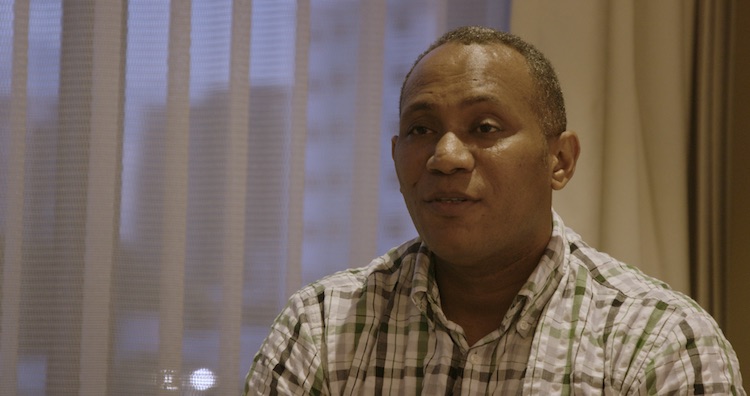

Euren Cuevas Medina criticized the agreement reached by the Dominican Republic and AES more than 10 years ago. (Photo by Leandro Fabrizi Ríos | Center for Investigative Journalism)
This has already happened. Nine years after that agreement was stipulated —on April 4, 2016— AES Corporation agreed in another lawsuit to compensate 46 residents of Arroyo Barril and the Province of Samaná with $37.8 million, an amount “paid with the taxes from the Dominican people,” Cuevas-Medina said. That same year, AES recorded $13.6 billion in revenue, according to its 2016 annual report.
According to sources and documents from the Delaware Superior Court, the compensation ordered by this lawsuit was distributed among defense lawyers, mothers who suffered abortions, or who gave birth to children with malformations, and the father of one of the infants.
“I think it’s the worst arrangement the Dominican Republic has made and I think we have to look for the people who did it,” Cuevas-Medina added. “Until now, it is a matter that must be classified as an abuse of power and an abuse of the Dominican State’s resources. And, if you will, as corruption.”
The Transactional Agreement of 2007 was signed by Maximiliano Rabelais Puig Miller, the former Dominican Republic’s Secretary of State for Environment and Natural Resources. At present, the sociologist and politician is president of the Alliance for Democracy party, for which he was a presidential candidate during the country’s general elections of 2012.
The executives who signed on AES’s behalf were Allan Dyer, former president of AES Puerto Rico, Daniel Rothaupt from AES Corporation, and Jodi Frost from AES Aggregate Services.
The controversy over these events, however, did not end there. On Februaru 24, 2017, 232 residents of Arroyo Barril filed another complaint before the Judicial District of Samaná, claiming $80 million in compensation. This time, not from AES, but from the lawyer who would presumably represent them in the lawsuit that was transacted in Delaware and only compensated 46 people: Robert Vance.
“We have initiated a legal process for breach of trust and fraud against Mr. Robert Vance,” said Pedro Catrain-Bonilla, the attorney leading the class-action suit against Vance.
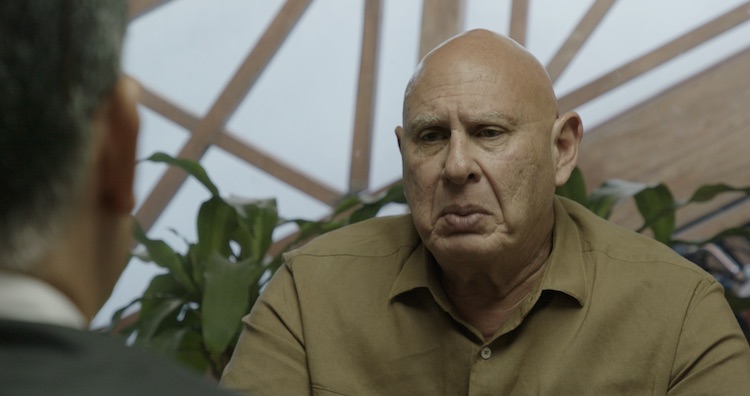

Pedro Catrain-Bonilla represents Arroyo Barril’s neighbors in a class action against their former lawyer. (Photo by Leandro Fabrizi Ríos | Center for Investigative Journalism)
He alleged that Vance signed a legal representation contract with the 232 plaintiffs but did not offer due defense to his clients. According to Catrain-Bonilla, Vance also didn’t he offer updates on the judicial process, or notify the residents that they were excluded from the $37.8 million compensation.
“We have the list he made, we have submitted the contracts and testimonial proof from his assistant that he did signed 232 people,” Catrain-Bonilla said.
Vance was not available to answer questions.
“It’s fraud on top of fraud, because AES committed the first fraud by bringing toxic waste saying there was none, nor would they cause any kind of harm, and we have known about the amount of harm it has caused to the Arroyo Barril community,” Catrain-Bonilla added.
At the closing of this story, the Samaná public prosecutor had not yet determined whether, as a result of the complaint, he would present a formal accusation to start a trial. However, Catrain-Bonilla said he was confident that this will happen in December and that the process will begin in January 2019.
Toxic Cocktail
The coal ash produced by AES Puerto Rico contains heavy metals such as arsenic and cadmium, in proportion “well above the levels established by international standards,” according to a 2004 report from the Dominican Republic’s Academy of Sciences. Also, they concentrate potentially carcinogenic elements such as lead, mercury and hexavalent chromium, a study commissioned by the U.S. Environmental Protection Agency certified in 2012.
In 2015, the National Biotechnology Information Center identifiedhexavalent chromium as a stomach carcinogen in humans and the U.S. Department of Health’s National Toxicology Program reported in 2009that this element favors the growth of intestinal tumors and ulcers.
On the other hand, U.S.-based laboratory Test America Savannah certified in 2010 that the ashes that AES generates in its Guayama power plant –and that have been scattered in at least 13 municipalities in Puerto Rico– emit alpha and beta radiation.
Both the EPA and the U.S. Centers for Disease Prevention and Control acknowledge that when radioactive particles are inhaled, the risk of getting cancer increases significantly.


